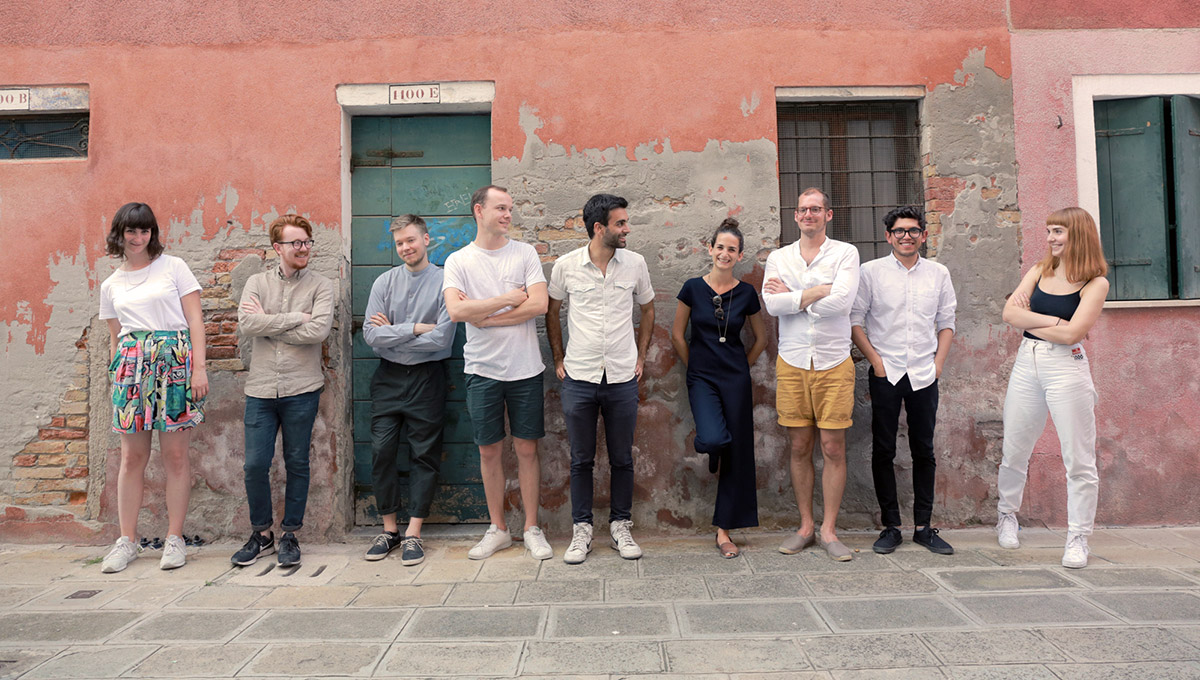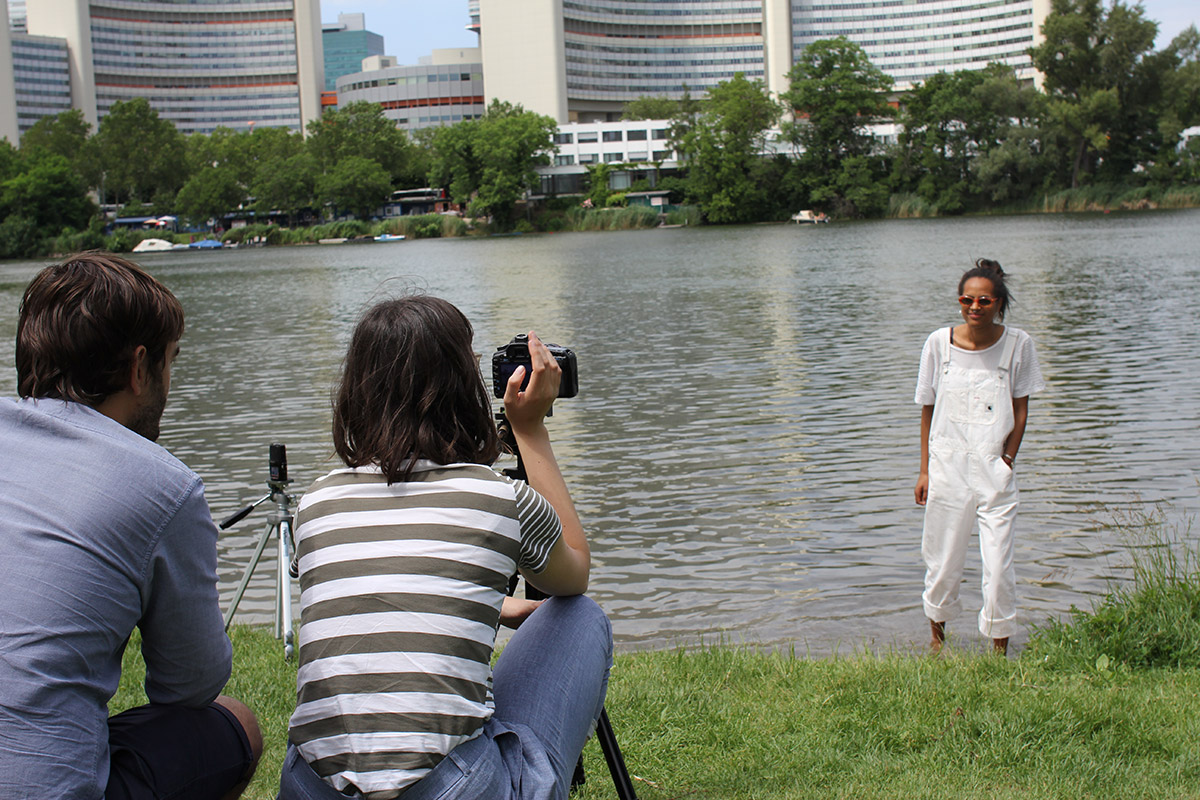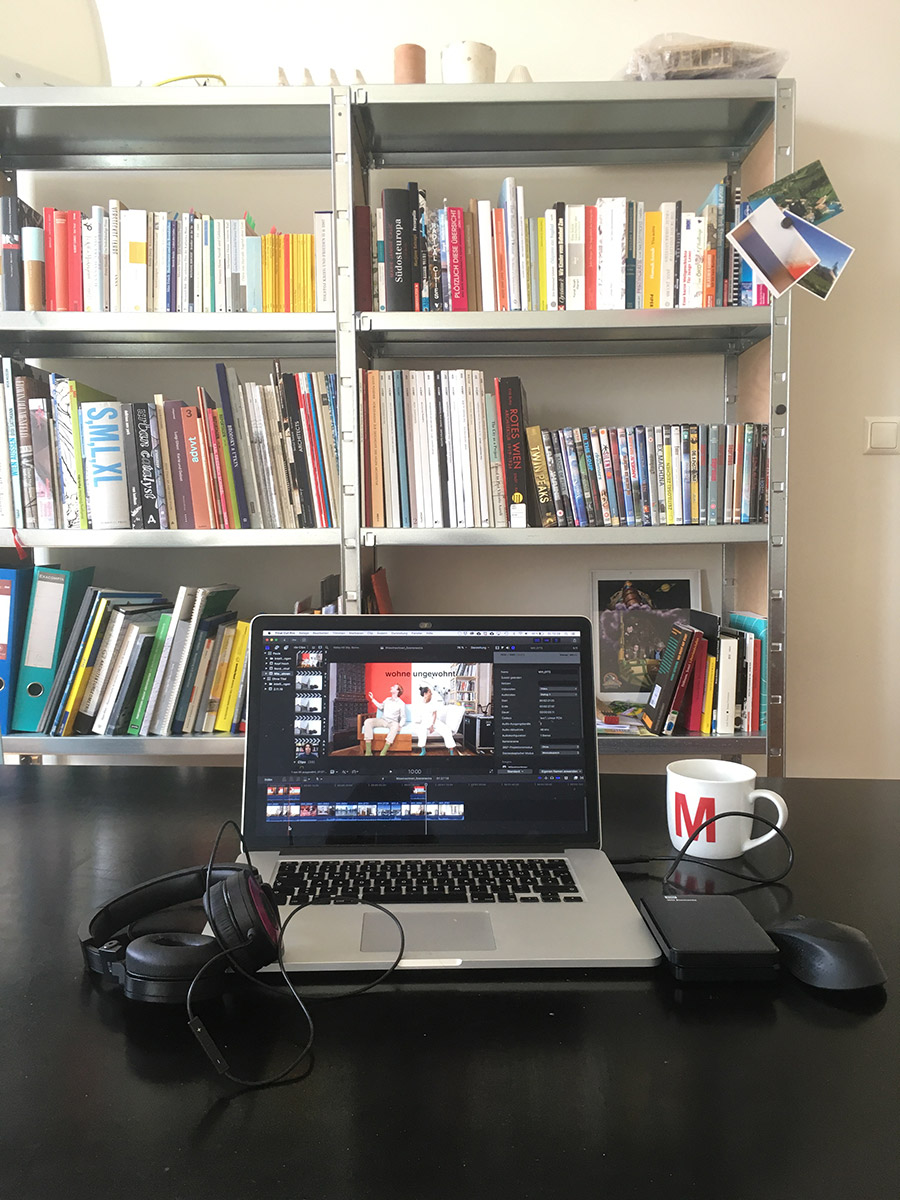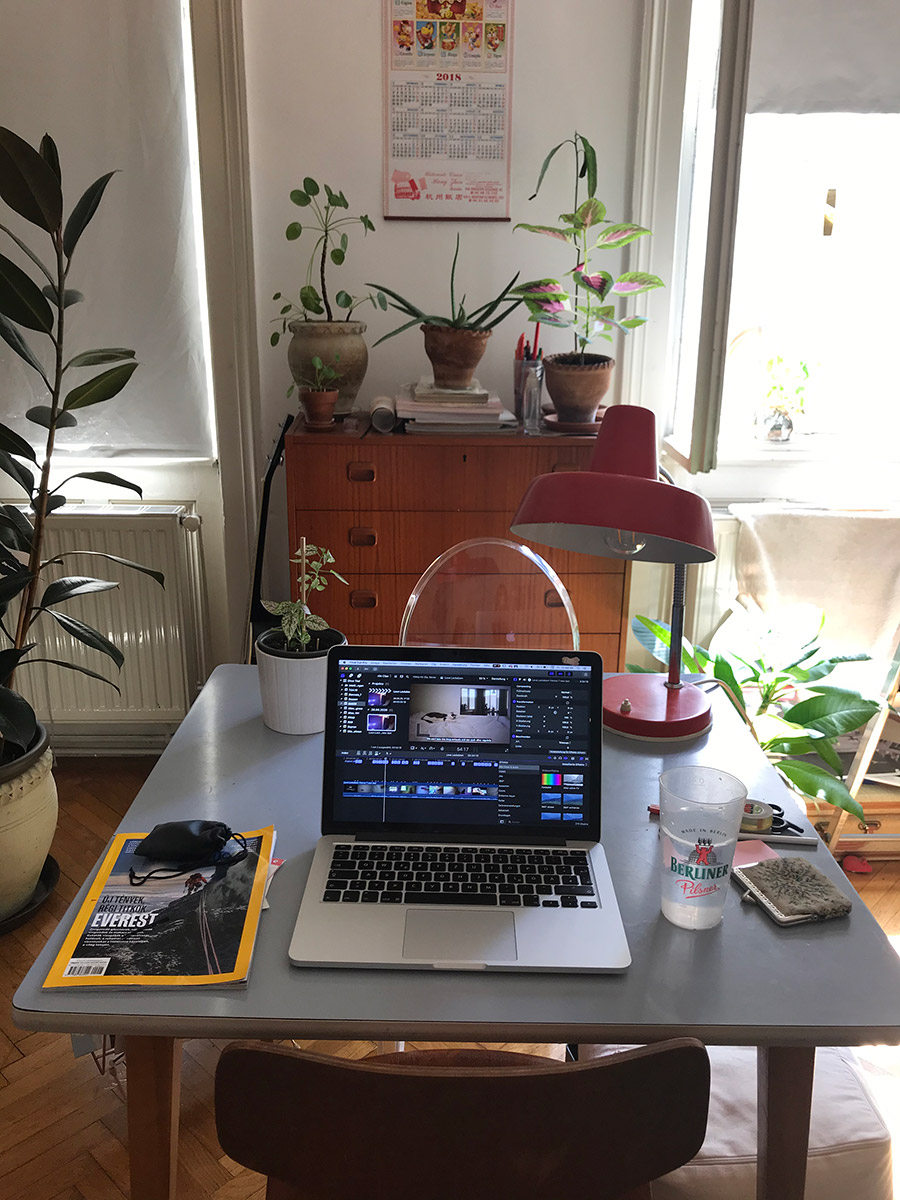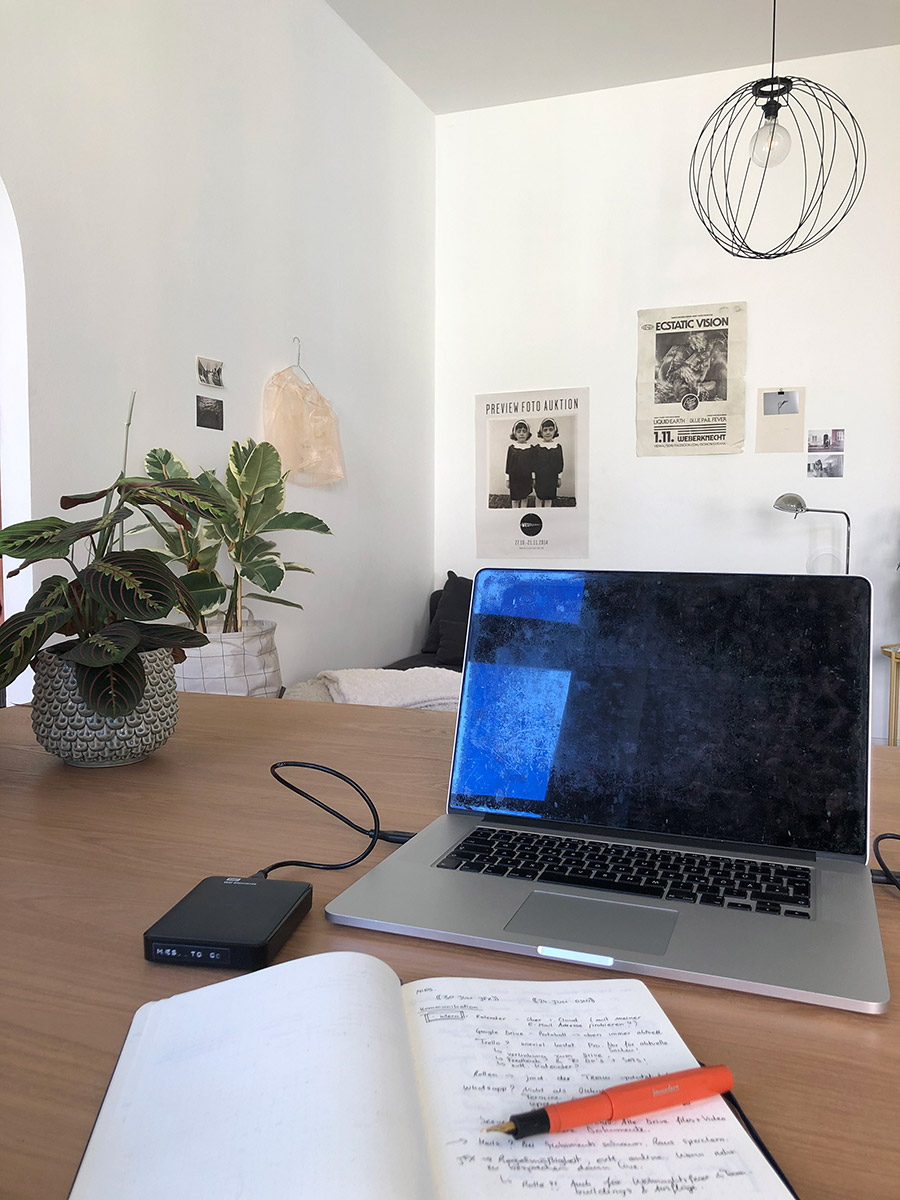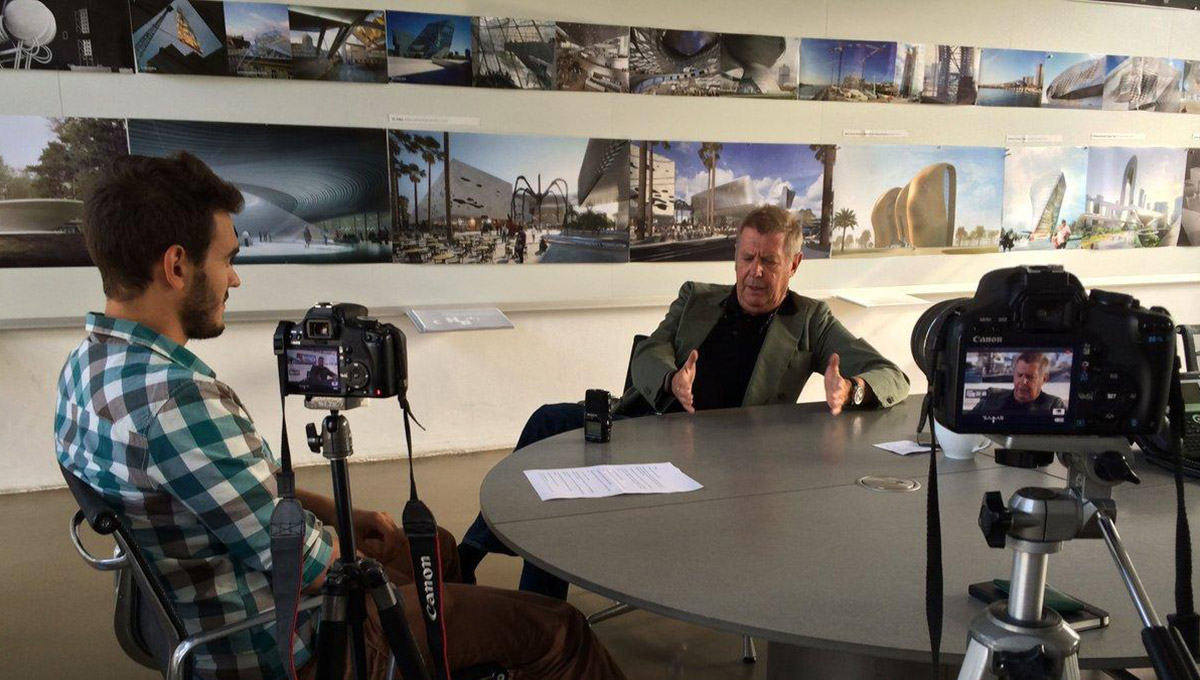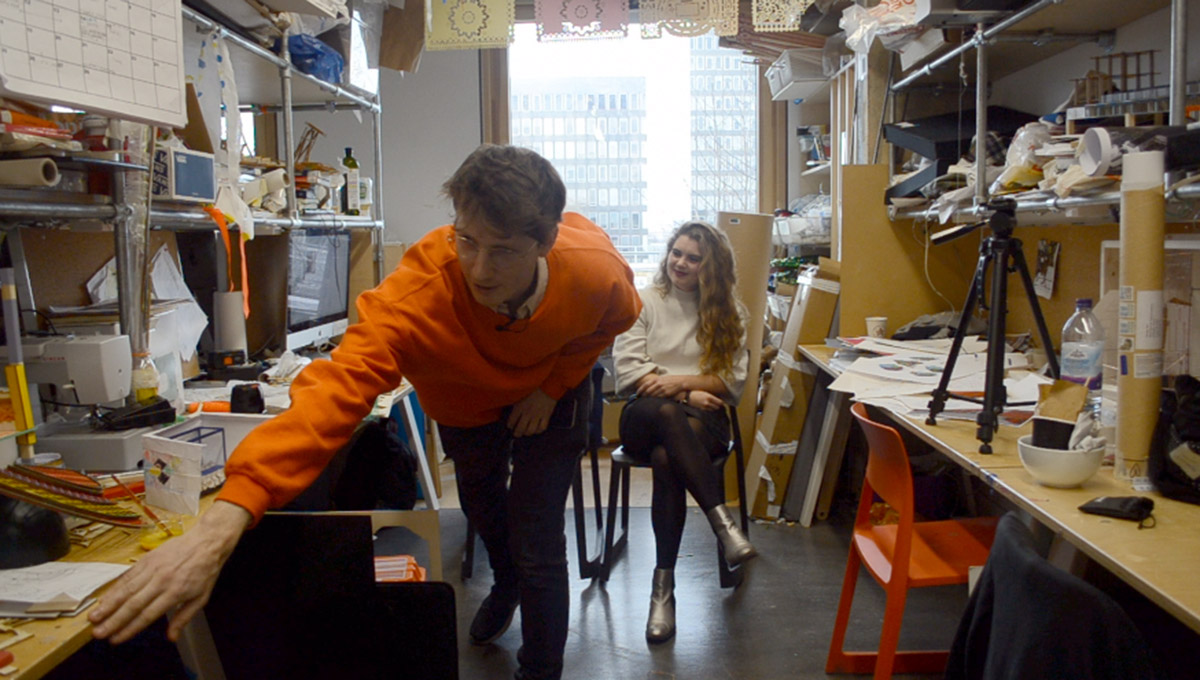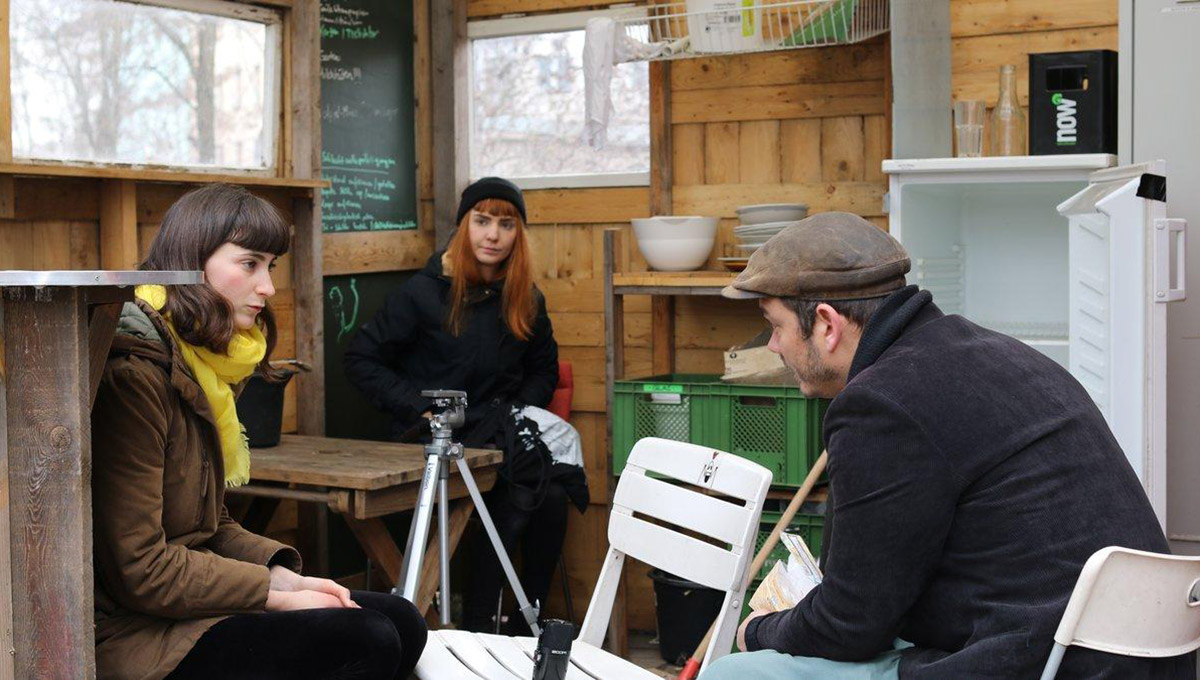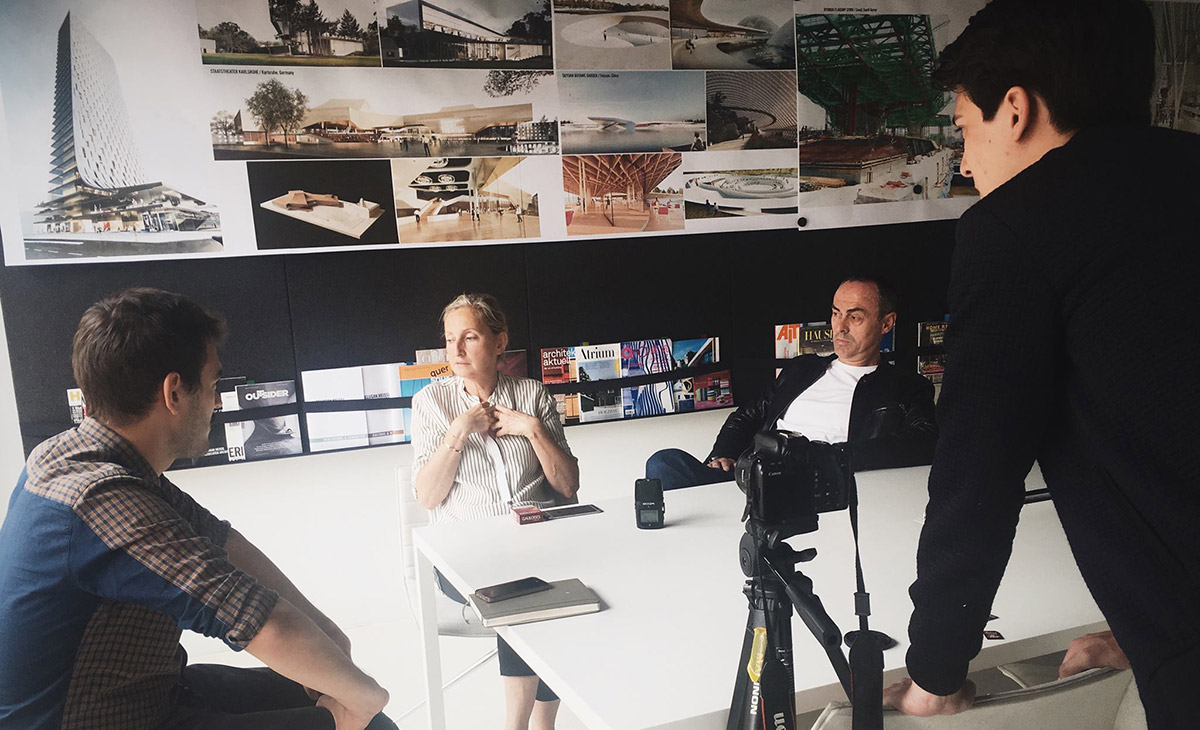20/039
Mies. Magazin
Media Platform
Vienna
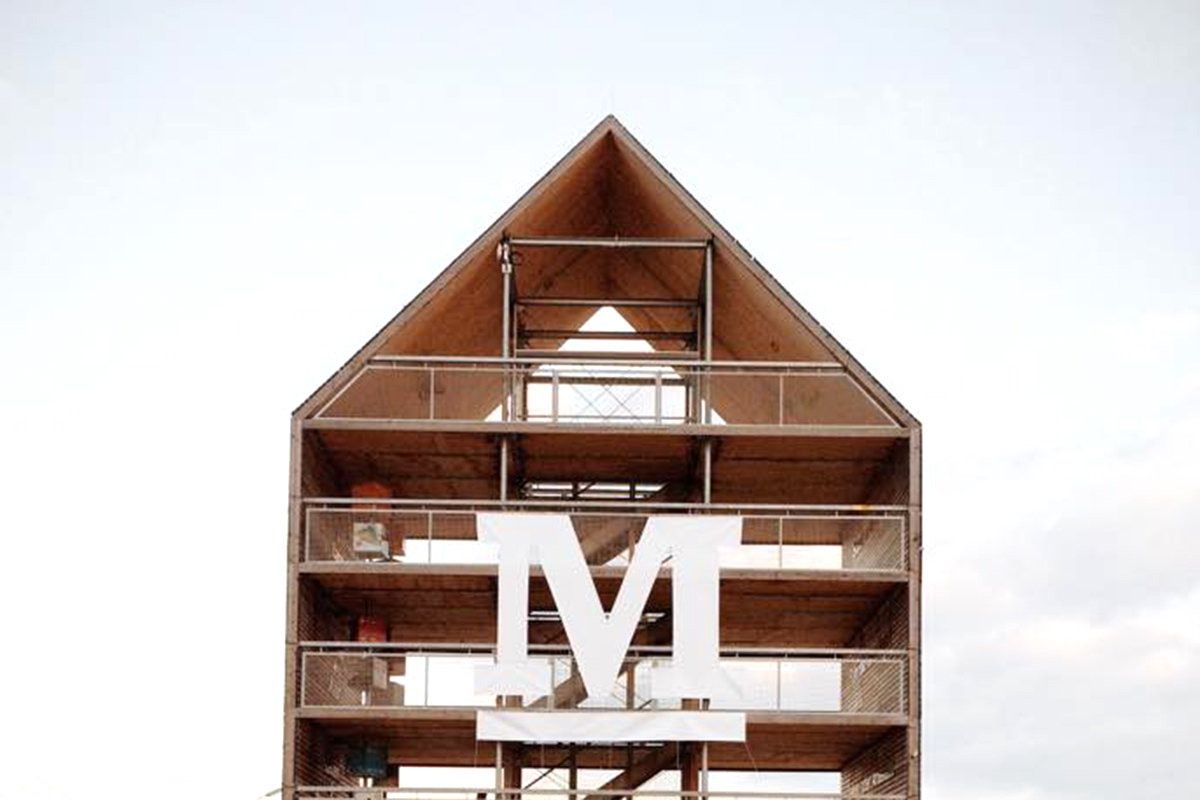
«We see a big potential in the field of architecture media to address and reach people outside of the professional and academic realm of its own metier.»
«We see a big potential in the field of architecture media to address and reach people outside of the professional and academic realm of its own metier.»
«We see a big potential in the field of architecture media to address and reach people outside of the professional and academic realm of its own metier.»
«We see a big potential in the field of architecture media to address and reach people outside of the professional and academic realm of its own metier.»
«We see a big potential in the field of architecture media to address and reach people outside of the professional and academic realm of its own metier.»
Please, introduce yourself…
Hi, we are Arian, Chiara, and Paula – three of six producers of Mies. Magazin, a video-interview platform about architecture, based in Vienna, Austria. Together with other Mies. teams that developed in different countries – such as United Kingdom, Slovakia, Mexico, France, Germany and the Netherlands, we form the international network of Mies. TV. Our aim is to bring informal and uninhibited filmed interviews with architects, students and people who work in the realm of architecture to people within and beyond the common architectural discourse. Stories of raising issues in architecture can be told in a new way through the media of video which enables complex content to be understood more easily. Talking about architecture we want to generate better access for non-architects and not-yet architects to relevant discussions in the architectural field. Our videos are available online, but physical events like screenings were always important to us – to generate a platform for exchange.
The name of Mies. is a wordplay. It’s a reference to Mies van der Rohe, but also means “lousy” or “miserable” in German. This kept the expectations of our audience low.
Mies. countries and current teams:
Mies. Magazin AUT: Paula Brücke, Chiara Desbordes, Dominik Kastner, Arian Lehner, Theresa Margraf, Bernhard Mayer
Mies. DE: Johannes Klieber
Mies. FR: Antoine Basile, Cézar Bazin, Ines Winckler
Mies. MX: Emiliano Bautista Neumann, Gonzalo Mendoza Morfín
Mies. NL: Roos Pulskens
Mies. UK: Matt McCallum, Sam Stair, Iga Swiercz
Mies. SK: Adam Gajdos
Please, introduce yourself…
Hi, we are Arian, Chiara, and Paula – three of six producers of Mies. Magazin, a video-interview platform about architecture, based in Vienna, Austria. Together with other Mies. teams that developed in different countries – such as United Kingdom, Slovakia, Mexico, France, Germany and the Netherlands, we form the international network of Mies. TV. Our aim is to bring informal and uninhibited filmed interviews with architects, students and people who work in the realm of architecture to people within and beyond the common architectural discourse. Stories of raising issues in architecture can be told in a new way through the media of video which enables complex content to be understood more easily. Talking about architecture we want to generate better access for non-architects and not-yet architects to relevant discussions in the architectural field. Our videos are available online, but physical events like screenings were always important to us – to generate a platform for exchange.
The name of Mies. is a wordplay. It’s a reference to Mies van der Rohe, but also means “lousy” or “miserable” in German. This kept the expectations of our audience low. :P
Mies. countries and current teams:
Mies. Magazin AUT: Paula Brücke, Chiara Desbordes, Dominik Kastner, Arian Lehner, Theresa Margraf, Bernhard Mayer
Mies. DE: Johannes Klieber
Mies. FR: Antoine Basile, Cézar Bazin, Ines Winckler
Mies. MX: Emiliano Bautista Neumann, Gonzalo Mendoza Morfín
Mies. NL: Roos Pulskens
Mies. UK: Matt McCallum, Sam Stair, Iga Swiercz
Mies. SK: Adam Gajdos
How did you find your way into the field of Architecture Media?
We started in Vienna as young students with little knowledge of architecture and video-making. We began conducting interviews out of curiosity to learn more about architecture, beyond the content we learned at architecture school. With a local community TV-channel called “Okto”, we saw an opportunity, took our cameras and visited architects. We developed a mediaformat – a short interview-video series – which was not established in architecture journalism yet and used online media, which we knew very well. So it was easy for us to reach an audience, which was at the beginning architecture students just like us.
We were interested in portraying the thoughts of architects on their practice and their personal history. Additionally we wanted to present projects and ideas from within architecture schools and show the possibilities of an architecture education beyond building practice by talking to people at intersecting fields with architecture.
Over the years teams from other countries joined and produced videos within the same format and we grew into an international network.
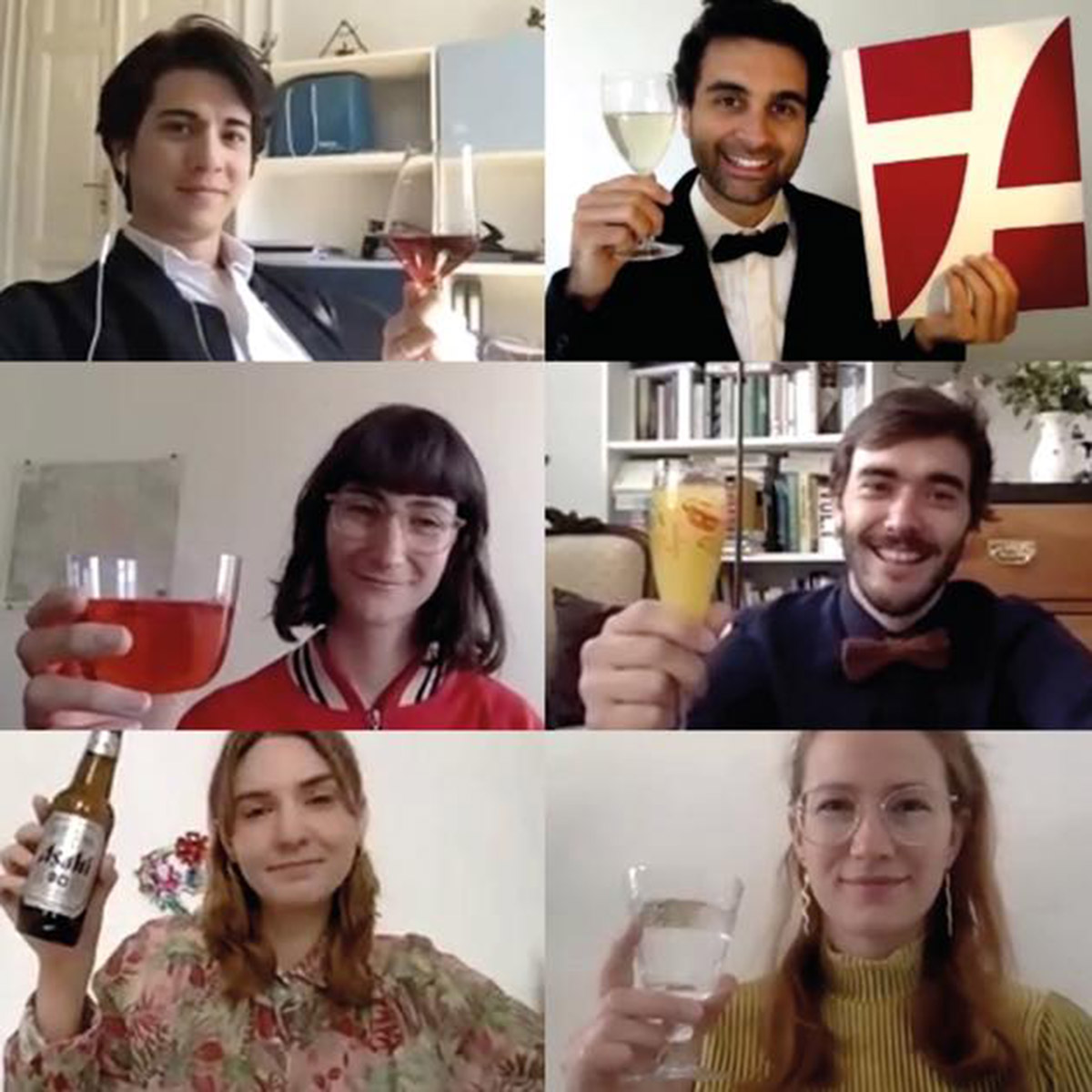
Mies. Magazin celebrates receiving the annual incentive award from the City of Vienna in 2019
What are your experiences founding your own media? What difficulties did you face?
We thought that we would not be taken seriously, but being a TV-show seemed to give us legitimacy and relevance, even though no one knew us yet. Since we started out of pure enthusiasm and excitement, without any economical reason and pressure, it was not very difficult to establish our own media-platform. It gave us the chance to do a lot of interviews on topics we were personally interested in.
The challenges we faced were mostly technological: The technical aspects of new media were new to us. We have no professional background in filmmaking. So that’s why we always liked our name Mies. The video quality of some of the interviews in the beginning was quite lousy. But we grew into it. The challenges we face now are how to continue a student project after our studies. How professional do we want to be? How does our format develop?
How would you characterize the city you are currently based at as location for your production practicing architecture? How is the context of Vienna influencing your work?
Vienna has a rich cultural life and is a city, big enough to have diverse and interesting architecture-related projects and practices to portrait. One aspect that was also crucial to our founding was that we all studied at a very large university, where we had to orientate ourselves, yet had a lot of freedom. It was possible to work on other projects while studying. Thanks to the TV-channel “Okto” people in Vienna have the possibility to create community television series which gave the initial framework for Mies. Magazin.
What does your desk/working space look like?
We work individually at home. We have no central office, but regular meetings at various places.
How would you characterize the city you are currently based at as location for your production practicing architecture? How is the context of Vienna influencing your work?
Vienna has a rich cultural life and is a city, big enough to have diverse and interesting architecture-related projects and practices to portrait. One aspect that was also crucial to our founding was that we all studied at a very large university, where we had to orientate ourselves, yet had a lot of freedom. It was possible to work on other projects while studying. Thanks to the TV-channel “Okto” people in Vienna have the possibility to create community television series which gave the initial framework for Mies. Magazin.
What does your desk/working space look like?
We work individually at home. We have no central office, but regular meetings at various places.
For you personally, what is the essence of architecture?
We don’t know and that keeps things interesting.
Whom would you call your mentor?
Due to meeting so many different people and personalities in our interviews, we get in touch with a variety of different views and perspectives on architecture and beyond. Being exposed to so many different thoughts and ideas, these interviews expand our personal understanding of architecture. In a way, our interview partners themselves become sort of mentors for us. We started as young students, eager to learn more about architecture beyond the academic structure and have witnessed many glimpses into different fields of architecture, which we want to share through our videos.
Name your favorite …
Book: „Das war Mies. – 5 Jahre Architekturvermittlung“, Eigenverlag, 2016
Architect: Ludwig Mies van der Rohe
Building: Schikaneder Kino, Margaretenstraße 22-24, 1040 Wien (the place where we host our live screenings)
Drink: Aperol Spritz (at every Architecture Biennale in Via Giuseppe Garibaldi)
Hard Drive: WesternDigital Elements™ 3 TB (USB 3.0-Schnittstelle, Plug-and-Play, kompakt und leicht), 2,5 Zoll, schwarz
How do you communicate/present architecture? Why did you decide to use this specific way of communicating architecture?
We first and foremost communicate via the medium of video-interviews. It seemed to be the most fitting media for us, to explore and share architecture. Since we were just 19 years old, growing up with videos, TV and YouTube, it seemed to be a media we were used to and saw a potential in – also to reach our audience which were architecture students just like us, at the beginning. Quickly, we realised the possibilities of storytelling through videos. The format of interviews enables us to present people in a very personal way, getting into a dialogue with them and noticing their face expressions and gestures, not only their words.
Interview Recording Sessions
While our format of gathering stories is based on digital video-recording and editing, it was always important for us – from the very beginning – to bring people physically together and present the videos at a live event in front of an audience. Every single episode of interviews is being screened at a cinema for free, bringing non-architects, not-yet-architects and architects together at one space.
Only after this event, we actually upload our videos on YouTube and broadcast it on TV, which allows the stories to be heard and seen from people beyond our network in our cities. Furthermore our online platform developed into an archive of architectural stories.
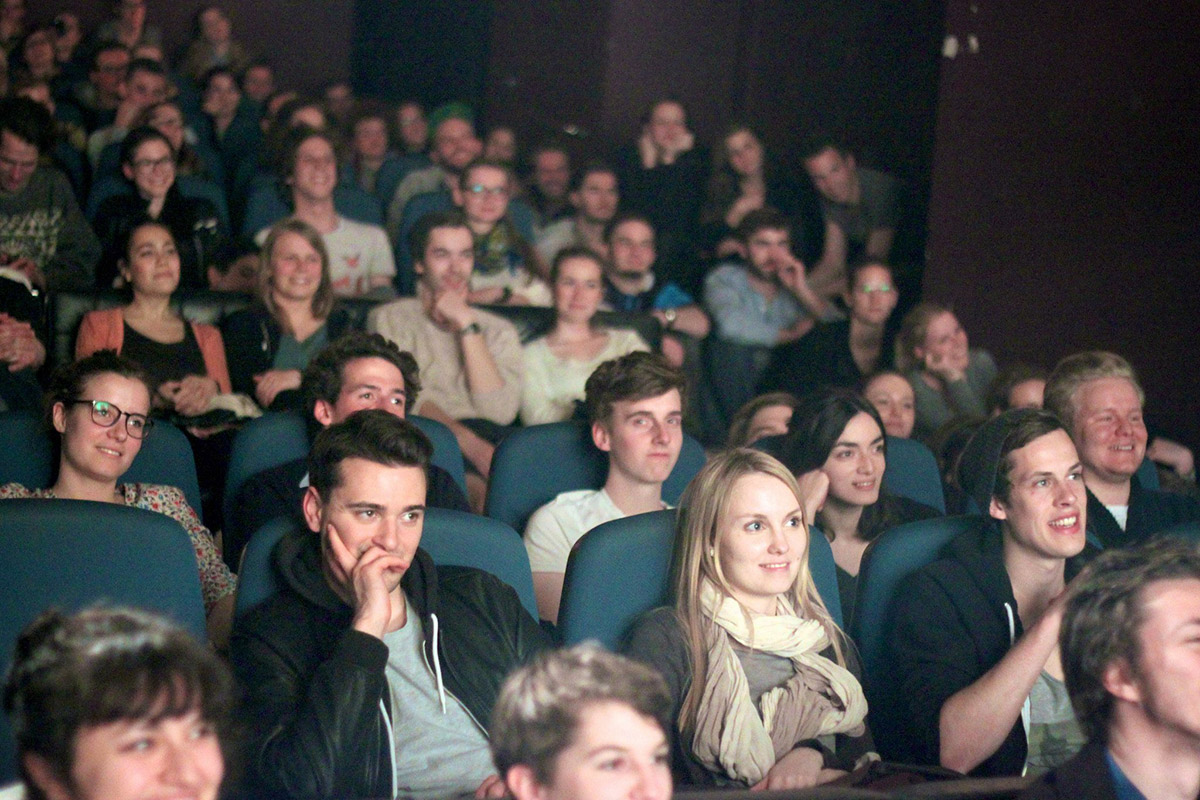
Screenings of Mies. TV episodes , ® Michael Hammerschick
What needs to change in the field of architecture media according to you? How do you imagine the future of architectural communication?
We see a big potential in the field of architecture media to address and reach people outside of the professional and academic realm of its own metier. Since architecture is a matter which influences entire societies and every individual, it is important to communicate relevant architectural topics in a language which is accessible and understandable also by non-professionals. It is about the possibility for everyone to create a personal sensibility toward topics of architecture, cities and space – to enhance the own “Baukultur” of a place.
If there were one skill you could recommend to a young architect to study in depth at architecture school: what would it be and why?
To become a successful architect in the future, we see it is crucial to consider the wide spectrum of architecture and to remain open towards its new aspects and overlapping area between architecture and other new fields and disciplines.
Architectural studies offer so many different directions and branches one can grow into. It is essential to obtain an overview of what potential there is and which topics one can best identify with.
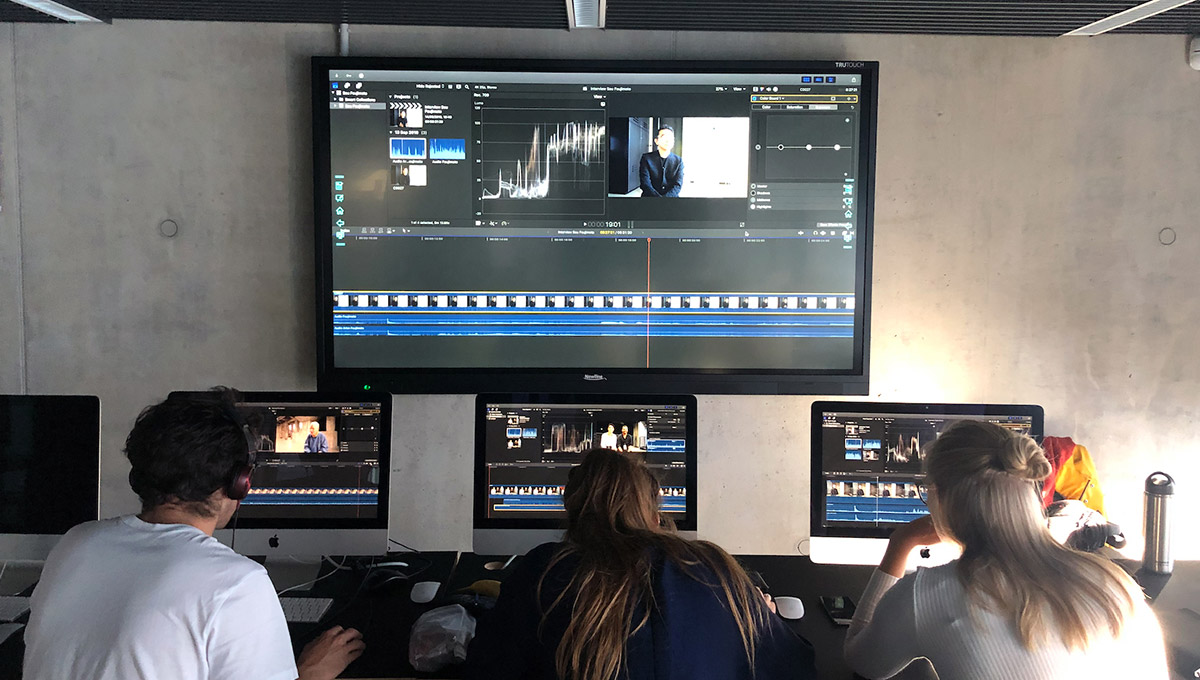
Mies. TV teaching at EKA Tallinn @ Mies. TV
How do you understand the relation of theory and practice in architecture?
Theory and practice should complement and strengthen each other. It’s important for an architecture practice to have a theoretical backbone, as well as for theory to have relevant practical references to support it.
In other cases, theory and practice can also oppose each other and the friction which might arise between them can help to gain new insights.
When you read theoretical texts, what might the output look like?
How do you perceive the representation of women in the architecture field?
Women are clearly less represented in the field of architecture, and media plays an important role in this structural discrimination. At the beginning of our practice we didn’t pay much attention to this inequality of representation. Later we realised that we as media are part of this issue. Since then we try to lay a stronger focus on this apparent problem by actively interviewing more women. We think that it is highly relevant how we paint the picture of the representation of women in the field of architecture. We ourselves are happy to have a balance in our team at the moment in Vienna that consists of three women and three men.
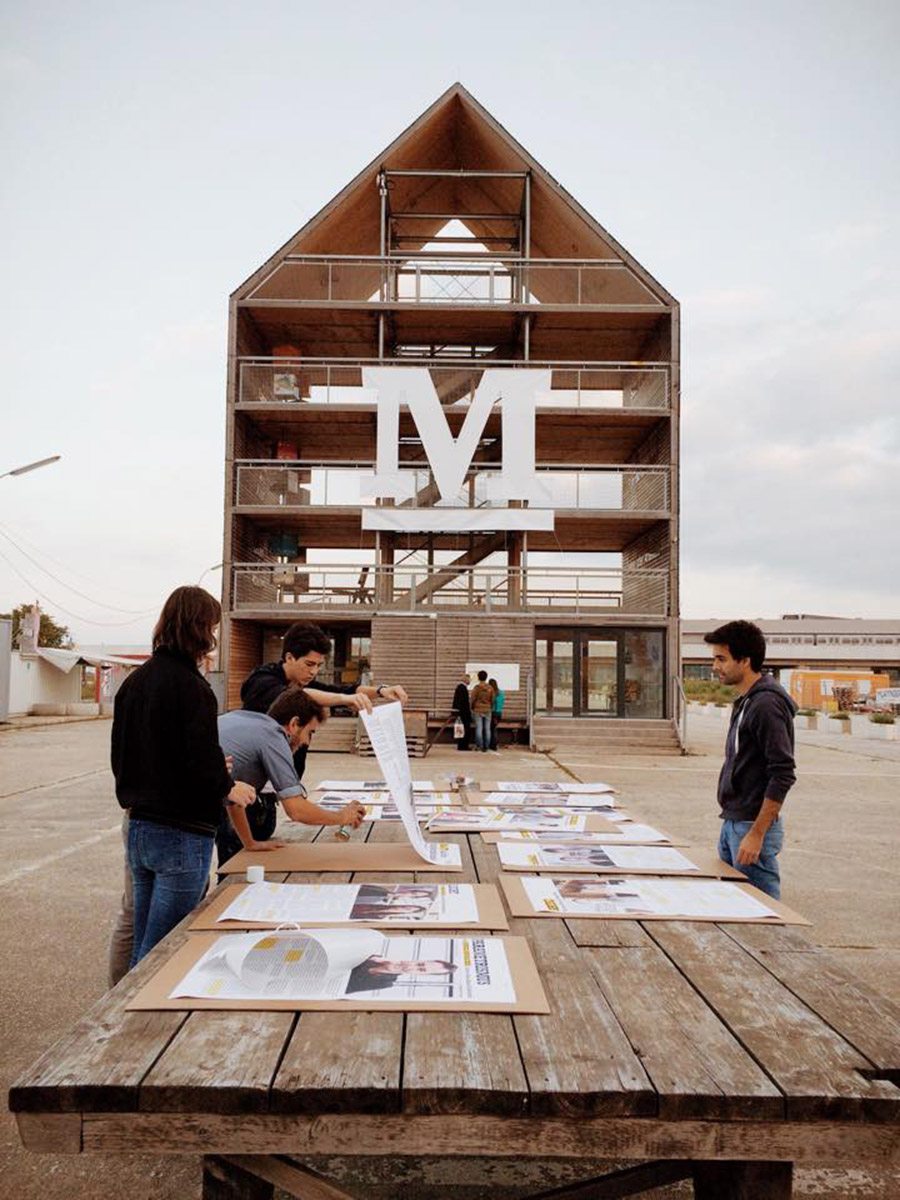
Mies. Festival in der Seestadt Aspern 2013 / the M is hanging on the Flederhaus by heri und salli
How does COVID19 change the way you work?
As for many people, COVID19 forced us to hold our meetings online. We have always been working in between the digital (filming, editing, archive) and the physical (interviewing people, presenting shows in a cinema). During Covid19 we organised our screenings in the digital space, using LIVE-Streams where people could still come together, watch episodes collectively and engage into discussions via the comment section. Still, we are already looking forward to interview people face to face again.
What person/collective or project do we need to look into?
We would like to make some suggestions for Viennese projects and media: Architektur im Magazin, blank magazin, Okto, dérive and urbanize
Project 1
Mies. Episode
A classical Mies. episode consists of three videos, a report, a portrait of an architectural practice and a university-related issue. Here comes a combination from over the years:
RE-PORT: Revier
Together with Marion Taube, cultural scientist, we drove through her beloved Ruhr area and talked about its special beauty.
PORT-RE: Peichl
We visited the Austrian architect and cartoonist Gustav Peichl in his first ever architecture project: his own home. Famous for his humorous attitude, he explained the importance of creating personal projects and how the hand drawing can lead us to creating an architecture with a soul.
DIE UNI: Architekturspezies
How does the daily life of an architecture student look like? We asked young people from other fields of study what they would guess. What are the typical preconceptions of an architecture students and are they being seen as highly attractive? We followed each step of two architecture students – Thomas and Alex – for one day to get a glimpse of their routine.
Project 2
Biennale with Mies. TV
Venice
2018
Mies. TV explored the two sides of the Biennale: the architectural discourse and the opening as a networking event – interviewing curators, organisers and visitors of the architecture exhibition.
Including Jean Novel, Peter Cook, Winy Maas, Peter St John, Patrik Schumacher, Anna Heringer, William J.R. Curtis, Peter Rich, Sandra Hofmeister, Vedran Mimica, Juhani Pallasmaa, Job Floris, GRAFT, Manuel Herz
Website: www.miesmagazin.tv / www.miestv.com
Credits Text+Images: © Mies. Magazin, © Mies. TV
Instagram: @miestvcom
Facebook: @miesmagazin
Interview: kntxtr, ah+kb, 10/2020
Website: www.miesmagazin.tv / www.miestv.com
Credits: ©Mies. Magazi, ©Mies. TV
Instagram: @miestvcom
Facebook: @miesmagazin
Interview: kntxtr, ah+kb, 10/2020
